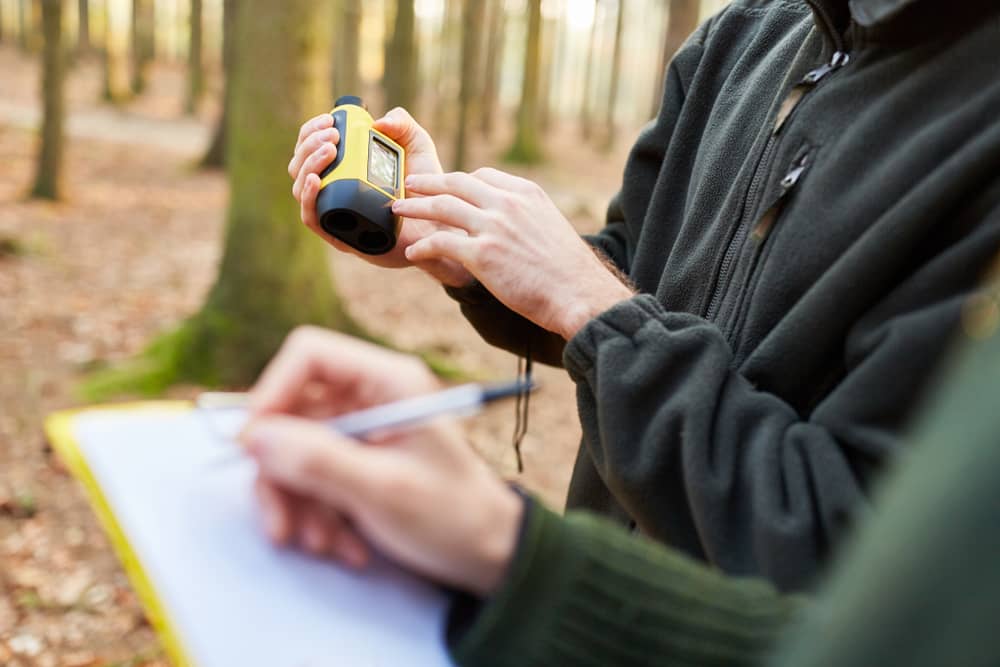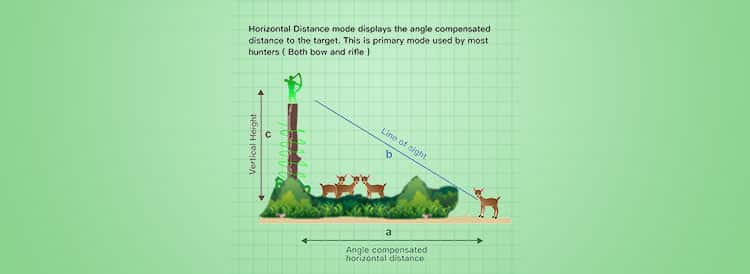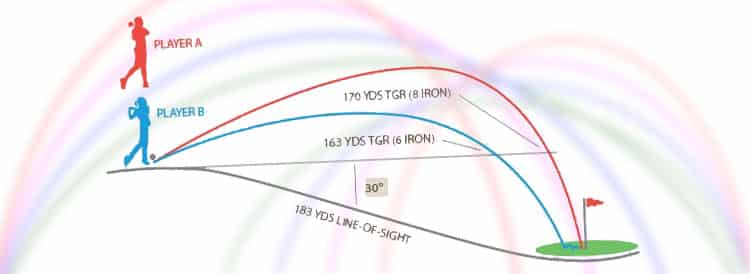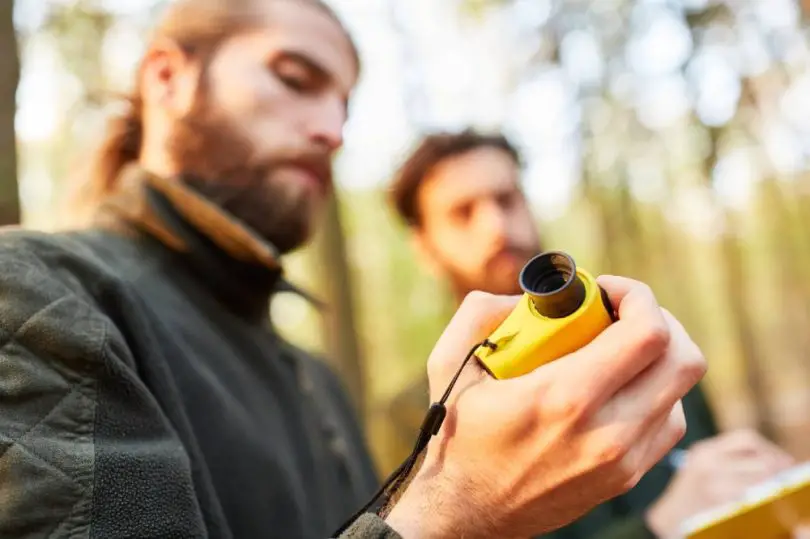You must be worried about your laser rangefinder accuracy if you are an avid outdoorsman and hunter who is so much into hunting optics.
Laser rangefinders including the basic and good ones measure the distance for your perfect shot, rangefinder accuracy is the prerequisite for having a pleasant experience while target shooting and casual hunting.
Besides, it can help a user greatly in the sport of Golf. Without accurate reading, a rangefinder will be considered nothing but a toy.
Go through the article to know what factors determine the laser accuracy of a rangefinder.
Laser Rangefinder Accuracy: How Does a Laser Rangefinder Work?

The mechanism defines the functionality and efficacy of any particular device. Knowing how the laser rangefinder accuracy works will help you understand how accurate are laser rangefinders.
And the knowledge of its basic concepts will allow a user to get the best outcome from a rangefinder.
It doesn’t include any complicated process. It measures the distance by using a fundamental principle of science. The long range laser measuring process of a rangefinder goes something like this:
If you press the button, the rangefinder will emit laser beams.
Those beams will travel the distance between the target object and the rangefinder unit and return to the former position.
The built-in high-speed clock of the rangefinder will keep measuring the time and calculate the distance before displaying it on the screen.
As the speed of light is constant, it is easy to calculate the distance using the time laser beams took to travel a particular distance.
The following bullet list will give you a brief idea about the working principle that a high accuracy laser rangefinder follows:
- The focus locks onto the target.
- A concentrated beam of laser pulses is thrown at the target. The transmitted laser pulses may differ in terms of wavelength, sharpness etc.
- The laser beam hits the target and returns to the units’ sensor.
- The high-speed clock of the laser rangefinder measures the time it took for the laser to travel the distance, twice!
- The CPU calculates the distance using a simple calculation.
Some modern rangefinders have introduced “multi-pulse technology,” which creates thousands of tiny laser pulses within a short time.
Those pulses gather a large amount of data, and the unit analyzes those readings, taking into account the fog, rain, brush, and the like.
One of the many advantages of laser pluses is to improve the accuracy even if the target is non-reflective.
How To Use The Laser Rangefinder For Better Accuracy
The accuracy of a device depends primarily on its build quality. Some of the other factors that impact the accuracy of your laser rangefinder is laser deviation, target’s size, your elevation, weather & light condition, obstacles, and visibility.
You may need to spend more on a rangefinder to get a more accurate measurement. All the rangefinder manufacturers advertise the effectiveness of their products based on the ideal condition.
But the perfect ideal condition is a myth, so there might be other things that affect the accuracy of your laser rangefinder, such as temperature, rain, fog, brush, clouds, etc. The accuracy factors related to the users and the devices are as follows.
1. Deviation of the Laser Beams
The common feature of laser beams or beams of light is they are prone to divergence with the increase in distance. The more they travel, the more they tend to deviate.
This spreading out has made it tough to get a perfect reading using the laser beams. So, it would be best to target a precise and small target.
A larger target will result in more divergence of the laser beams. And it’s advised to invest in a high-end rangefinder to get accurate results regardless of the distance.
Each rangefinder comes with a range that it works best within. Read the specifications carefully before purchasing one to avoid hunting/golf laser rangefinder accuracy issues down the line.
2. Types and Sizes of the Target
If you choose a too small target, that will not be precise as the unit will aim at it from a far distance. Avoid targeting branches of a tree or any flagstick. Pick something recognizable from the distance such as a tree, a rock, a bench etc. and try to pick a reflective target as that will produce the best result.
If you can choose a static and precise reflective target, the laser rangefinder will provide you with the most accurate reading.
3. User’s Skill
No matter how effective the device is, nothing will go right if a user can’t operate it correctly. An amateur user may cause the rangefinders to vibrate when shooting the laser beams.
Keep your body and hand still while aiming at the target to prevent any vibration. You can also use a stand to get an accurate result.
4. Understanding Line of Sight Distance
Understanding the line of sight is essential to understand laser rangefinder accuracy. It is an imaginary straight line between the unit and the target.
If the object is above the horizontal, it creates an elevation angle. If the object remains below the horizon, it creates an angle of depression.
Most rangefinders don’t consider these angles, which ultimately results in less accurate measurement.

All manufacturers claim that their devices are somewhat +/- 1 yard (or meter) accurate under ideal conditions keeping the slopes and the angle of elevation and depression in mind.
Remember that rangefinders give reading as per the distance to the object in a straight line.
You’ll need to consider the elevation change while shooting the target. The USGA allows these laser rangefinders on the golf course that can only measure the distance.
Some advanced rangefinders can measure the distance by taking the slopes, elevation, and weather conditions into account, but these are not allowed in sports.

How to Prevent the ‘Accuracy’ from Being Hurt?
You might get different readings at different times while aiming at the same target. It happens because some factors affect the accuracy due to the mistakes from the user’s end.
Focusing on the wrong target, getting obstructed by anything, or excess distance to the target might be vital factors that hurt the accuracy. Avoid the following tasks to get the utmost accuracy from a laser rangefinder.
1. Don’t Focus on a Wrong Target
Almost all rangefinders come with magnifying powers. Usually, a good-quality rangefinder has 6x magnification power. This is where they differ from hunting flashlights. It helps the users aim at the intended target.
But, the targets may deceive you in zoomed view, and the laser beam may point elsewhere. This is one of the reasons that affect accuracy the most.
During low light conditions, this problem becomes more acute. Most rangefinders perform poorly in low light conditions, unable to point the target precisely.
2. Don’t Allow Anything to Block the Beam
In the “Ideal Condition,” the distance between the unit and the target should be free from obstacles to get accurate readings.
But in real-life scenarios, you may get obstructed by a branch of a tree, a flying bird, raindrops, fog, leaves, or other things while lasing the target.
Be more cautious when using your favorite golf rangefinder or any such device, as it will affect your scores significantly.
3. Don’t Go Quite out of Range
Each rangefinder has some limitations. It can’t measure more than its ability. So, don’t try to measure the distance that outranges the device’s maximum range.
Besides, the maximum range of a rangefinder is applicable only under optimal conditions while targeting reflective objects.
Most of your targets are non-reflective and ideal conditions are rare to find. So, be careful about not going out of range.
People use a rangefinder to determine the distance between them and the object. Later, this measurement helps them shoot the target using a bow or a rifle and hit the golf ball as required.
So, getting accurate readings from your hunting rangefinder is essential to hit the target dead on. You can get maximum laser rangefinder accuracy by aiming at a precise target avoiding the divergence of laser beams.
And consider the other facts that affect the accuracy, like light condition, the position of the light source, and visibility. If you take these things into account and use the rangefinders skillfully, it’s possible to get accurate readings.








Leave a Comment